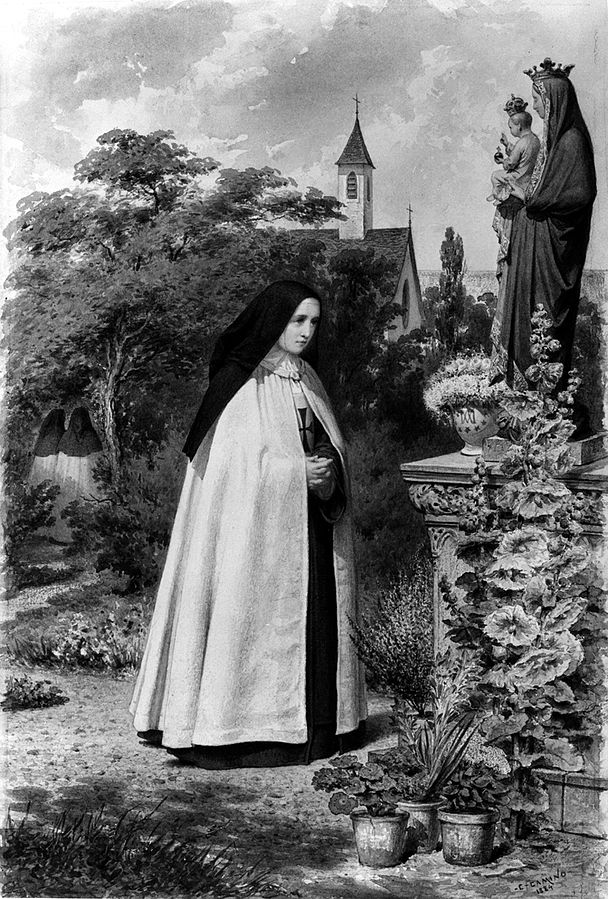
We have been examining the teaching of Fr. Thomas Keating and other Centering Prayer advocates, comparing them with Orationis formas (Letter to the Bishops of the Catholic Church on Some Aspects of Christian Meditation). In parts 2 and 3 of this series, we looked at Centering Prayer’s relationship to pseudognosticism. Now we turn to the essence of Christian prayer.
Throughout this series, quotes from Church documents and the saints are in purple. Quotes from Centering Prayer advocates are in green.
“The meditation of the Christian in prayer seeks to grasp the depths of the divine in the salvific works of God in Christ, the Incarnate Word, and in the gift of his Spirit. These divine depths are always revealed to him through the human-earthly dimension.” (OF, no. 11)
What separates Christian prayer from eastern forms of meditation? Christian prayer uses the material world, especially human nature, as a starting point for pondering divine truth.
So, we see a mountain and we turn our minds to God’s majesty. We see a bird and we ponder freedom from attachments. We see an infant and we marvel at the Incarnation. Natural, every day sights and sounds move us to prayer and to closer union with God.
Jesus Himself reveals God to us “through the human-earthly dimension.” Since He did not come to save angels, but humans, He became one of us–forever! Jesus never ceases to be a man. We forever go to God through Him, in a human mode. We cannot and do not relate to God as either the angels (pure spirits) or the beasts (mere material creatures) do. We have a particular way of drawing near to God–the human way.
How does true Christian prayer differ then from erroneous prayer forms? Orationis formas continues:
“Similar methods of meditation, on the other hand, including those which have their starting-point in the words and deeds of Jesus, try as far as possible to put aside everything that is worldly, sense-perceptible or conceptually limited. It is thus an attempt to ascend to or immerse oneself in the sphere of the divine, which, as such, is neither terrestrial, sense-perceptible nor capable of conceptualization.” (ibid.)
Prayer becomes problematic when it strives to put aside everything that is earthly, including thought, imagination, and affections. Beginning with a “sacred word” or a passage of Scripture is not sufficient, if one then tries to move beyond thoughts, images, and concepts. One must continue to relate to God in a human mode until God Himself lifts one to something higher. And even then it is something one cannot prolong or replicate.
Footnote 12 of Orationis formas explains further:
“Pope John Paul II has pointed out to the whole Church the example and the doctrine of St. Teresa of Avila who in her life had to reject the temptation of certain methods which proposed a leaving aside of the humanity of Christ in favor of a vague self-immersion in the abyss of the divinity. In a homily given on November 1st, 1982, he said that the call of Teresa of Jesus advocating a prayer completely centered on Christ ‘is valid, even in our day, against some methods of prayer which are not inspired by the Gospel and which in practice tend to set Christ aside in preference for a mental void which makes no sense in Christianity. Any method of prayer is valid insofar as it is inspired by Christ and leads to Christ who is the Way, the Truth and the Life .'”
Christian prayer is centered on Christ. The Church teaches this concretely. The Christian meditates on Christ, talks to Christ, loves Christ in his prayer. He does not try to get beyond doing so. There is no getting beyond Jesus, because He is the Second Person of the Trinity! No one comes to the Father but by Him.
A “mental void” is not Christian prayer.
Now, at this point, Centering Prayer advocates will protest, “We don’t seek to create a mental void! Centering Prayer is not about making the mind blank!”
Really? Then what do these words of Fr. Keating mean?
“The method consists in letting go of every kind of thought during prayer, even the most devout thoughts.”(Open Mind, Open Heart)
He defines “thought” to include
“a concept, a reflection, body sensation, emotion, image, memory, plan, noise from outside, a feeling of peace, or even a spiritual communication.”
Fr. Keating also says in response to a reader’s question:
“[Y]ou need not worry about experiencing what you may interpret as a blank once in a while. If you notice you have a blank, that’s a thought; merely return to your sacred word.” (Open Mind, Open Heart)
Now, tell me, what is the meaning of “mental void,” if not “absence of thoughts or images?” “Turning away from thoughts” is just another way of saying “trying not to think about anything.” It sounds gentler. It’s not supposed to be violent. And Fr. Keating admits most people have trouble doing this, telling them not to worry about it too much. But a mental void is clearly the goal he has in mind (pun intended).
Christian prayer does not turn away from thoughts, images, and emotions. Christian prayer turns toward Christ.
The Christian turns away from thoughts about hobbies or plans for the day, in order that his mind may focus on Christ. Thought is not an evil. It is nothing to be ashamed of. It does in itself not keep one away from God. One does not turn away from all thoughts, only profane thoughts, in order to think sacred thoughts. Sacred thoughts lead one to God.
Christian prayer meditates on the truths of the Faith until God gives the gift of contemplation. Letting go of thoughts should be a response to God’s action in prayer, not a method the Christian performs on his own.
Next time, we’ll consider what Orationis formas says about eastern religions.
Earlier posts in this series:
